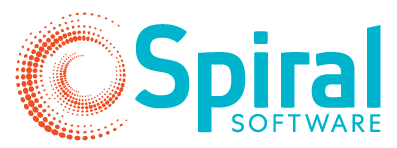
EMPOWERING CARE VIA THE REDUSE TRIAL:
INTEGRATING RESEARCH FOR HUMAN-CENTRED
TREATMENT IN SEPTIC SHOCK

THE REDUSE STUDY
Protocolised Reduction of Non-resuscitation Fluids vs Usual Care in Septic Shock. The objective of this study is to assess the beneficial and harmful effects of a restrictive strategy for the administration of non-resuscitation fluids in adult patients with septic shock.
REPORT
Primary Outcome: All-cause mortality at 90 days.
“We have been the platform provider for several studies looking at resuscitation fluids. This trial gives us a chance to bring that knowledge and apply it to maintenance fluids!”
AUDREY SHEARER, FOUNDER & CEO, SPIRAL

BACKGROUND
The REDUSE trial is a multi-centre, investigator-initiated, randomised clinical superiority trial comparing protocolised restrictive strategy for the administration of non-resuscitation fluids with usual care in participants with septic shock. Adult patients with septic shock will be eligible for inclusion. Participants will be randomised within six hours of admission to the intensive care unit.
In the intervention arm participants will not receive maintenance fluids unless total volume of fluid is not enough to provide hydration. All intravenous drugs and nutrition will be concentrated and administered with the objective to reduce volume of fluid. Resuscitation fluids will be administered according to local routines. The intervention will last for the duration of the intensive care unit stay. Participants in the control arm will receive usual care.
The primary outcome will be all-cause mortality at 90 days. Secondary outcomes will be complications during ICU stay, neuro-cognitive function and health-related
quality of life at 6 months, and days alive without mechanical ventilation at 90 days. Healthcare staff involved in the care of the participant will not be blinded to the intervention but participants, outcome assessors, statisticians, data managers, and conclusion drawers will be blinded to treatment allocation.
Sepsis is defined as life-threatening organ dysfunction caused by a host response to infection (Singer 2016). Recent estimates suggest that 48 million cases of sepsis occur globally every year and that 11 million sepsis-related deaths occur annually with the majority of cases occurring in developing countries (Rudd 2020). Septic shock is a subgroup of sepsis with particularly severe circulatory and metabolic abnormalities and approximately 35-50% of patients with septic shock die.
Administration of fluids is an essential component of the care of patients suffering from septic shock. Fluids are administered for different theoretical reasons. Resuscitation fluids are administered intravenously to ensure adequate tissue perfusion and oxygenation (Rhodes 2016) whereas non-resuscitation fluids are administered intravenously and enter rally as vehicles for medications, as vehicles for nutrition, to correct electrolyte disturbances, and to ensure adequate hydration (maintenance fluids). The latter purpose is considered to require a total of about 1-2 litres of fluids per day (1 ml/kg/h) in the healthy humans and may increase in pathophysiological conditions due to higher than normal losses. More than 50% of patients with septic shock receive 4 L or more of fluids in the first day in the ICU (Marik 2017).
This may be adequate in patients with pre-existing deficits, but data suggest that large volumes of fluids are not without risks. Non-randomised studies have indicated that excessive fluid administration might have detrimental adverse effects such as tissue oedema, with impaired oxygen delivery and organ function, and compartment syndromes (Boyd 2011, Payen 2008, Silversides 2018, Sakr 2017). These observations have inspired trials investigating if restrictive fluid administration improve outcomes in septic shock participants.
TRIAL DESIGN
The trial is a multicentre, randomised trial with a 1:1 concealed allocation. Participants will receive either protocolized restrictive administration of non-resuscitation fluids or usual care. The trial will be investigator-initiated and non-commercial. Outcome assessors, participants, statisticians, and conclusion drawers will be blinded to treatment allocation.
Non-resuscitation fluids were defined as fluids other than colloids, blood products and crystalloids at a rate ≥ 5 ml/kg/h. Indication, volume and type of fluid were recorded during the first 5 days after admission. A maximum of 30 patients could be included per centre.
To estimate the potential to reduce the administration of non-resuscitation fluid, a pragmatic "restrictive" protocol for administration of non-resuscitation fluids was devised based on the most restrictive practice already in place for non-resuscitation fluids at any of the participating centres.
The REDUSE Trial opened for recruitment in May 2022 at 8 vanguard sites in Sweden. With 98 patients randomised, enrolments have been paused to allow for a review of methods with a number of improvements scheduled for early 2023.
SUPPORTERS

“It is an incredibly agile environment. Whatever comes my way - I jump on it and deal with it”
Spiral’s contribution
Our Spiral Project Lead and EDC Product Owner for the STOP KNEE-OA study is Amanda Daley
As a Product Owner at Spiral, Amanda oversees software development used in clinical trials. She thrives on solving complex problems and brings a logical mindset to building smarter, streamlined digital platforms.



